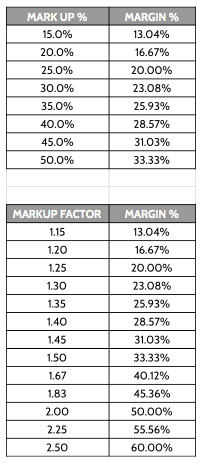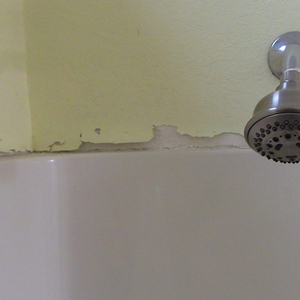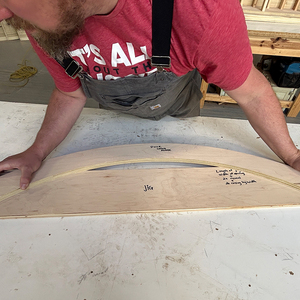Profit Margin: The Final Frontier
Margin is not markup. Do not use these words interchangeably. Doing so will cost you money.

“Space: the final frontier. These are the voyages of the starship Enterprise.”
This iconic phrase starts every episode of the TV show Star Trek: The Next Generation.
The show’s opening sequence ends with, “… to boldly go where no one has gone before.”
For the galactic explorer, space is the final frontier. For the construction business owner, the final frontier is profit. The process of determining and realizing a profit in a construction company is often an unexplored territory by business owners.
Think about a page in a book. The space between the printed words and the edge of the page is known as the margins. Much like that printed page, the margin for your business is the space between your costs and your price. The more space you have between those two numbers, the more profit you generate.
In my last post, I reviewed how to determine The One Markup for your business. Using one markup will save you time and increase the accuracy of your estimating.
But the markup you use to determine your price is only as good as the profit margin it yields.
Profit Margin, or just margin, in your business is a profitability ratio of net income to revenue.
Here is the formula for calculating your MARGIN:
(NET INCOME/REVENUE) x 100% = (PROFIT) MARGIN
Margin is not markup. Do not use these words interchangeably. Doing so will cost you money.
MARGIN is a ratio of your PROFITS to your PRICE.
MARKUP is a factor applied to your COSTS to determine your PRICE.
The markup you use for your business has to be high enough so that your costs and your expenses are covered with money remaining. This remaining money is your NET PROFIT.
And this is where many business owners get it wrong. They think that applying a certain percentage markup yields that same percentage of margin.
The percentage of money that you add to your costs does not equal the same percentage of money that is left over when compared to the price.
In other words, a 20% markup does not equal a 20% margin.
Let’s look at an example:
The cost for a service is $100 and the markup (factor) on that service is 20%.
COST x MARKUP FACTOR = PRICE = $100 x 1.2 = $120.00
The price is $120, and the profit can be calculated.
PROFIT = PRICE – COST = $120 – $100 = $20
In this example the PRICE is the revenue and the PROFIT is the GROSS PROFIT.
The margin for this example is the ratio of the GROSS PROFIT to the price expressed in a percentage.
(GROSS PROFIT/PRICE) x 100% = MARGIN or ($20/$120) x 100% = 16.7%
A 20% markup yields a 16.7% margin.
The difference in percentages above is real money. Many builders leave this money on the table when estimating and planning their work.
If you determine you need a 20% margin to operate your business, and you use a 20% markup to determine your price, then you are losing 3.3% of your income (the difference between 20% markup and 16.7% margin).
You have to markup your cost by 25% in order to yield a 20% margin.
The table below shows the margin realized for each markup. As the markup increases, so does the difference in percentages between the markup and the margin.

Don’t miss out on potential profit for your business by using the markup and margin interchangeably.
Learn this math. It never changes.
In my previous post, I explained how to calculate The One Markup factor for your business using the following formula:
(TOTAL REVENUE/COGS) = MARKUP FACTOR
The markup factor has to be high enough so that when you subtract your costs (COGS) and your EXPENSES you are left with a NET PROFIT.
DO NOT LET FEAR DETERMINE YOUR MARKUP. USE MATH.
Many construction business owners use a fear-based markup instead of a math-based markup.
A fear-based markup is a markup that is artificially low because the owner fears that the price will be too high when a certain markup is used. Business owners use this pricing strategy because they feel like they will lose jobs if the price is too high, or they use a markup because they heard that contractors can only charge a certain amount for their work.
Fear-based markups lead to inaccurate pricing and unprofitable projects.
A math-based markup is a markup that is calculated based on the actual, or projected, margin that a company requires to pay for its expenses and leave a net profit.
Every construction business is different with various market conditions, labor rates, material prices, and operating procedures. The profitable business owner must consider all of these factors when developing the unique markup for the business.
CALCULATING YOUR MARKUP TO YIELD A PROFITABLE MARGIN
Here is a simple procedure to determine the markup for your business so that your margin is enough to cover your expenses and leave you with a profit.
- Determine your TOTAL REVENUE.
The best way to determine your TOTAL REVENUE is to base that TOTAL REVENUE on historical data.
Example:
If your TOTAL REVENUE for last year was $500,000, then start with that number.
TOTAL REVENUE = $500,000
2. Determine your costs or COST OF GOODS SOLD (COGS).
For your construction company, your costs are the things that you buy and markup and sell to your clients. This usually includes your cost of labor, labor burden, subcontractors and materials. In general, labor will be your most expensive category in your COGS.
Let’s assume that your COGS is $335,000.
You can now determine the percentage of your COGS in relation to your TOTAL REVENUE.
(COGS/TOTAL REVENUE) x 100% = ($335,000/$500,000) x 100% = 67%
3. Determine your MARGIN.
Since your TOTAL REVENUE is 100% of your budget and your COGS is 67% of your TOTAL REVENUE, then you are left with 33% of your TOTAL REVENUE to pay for your expense and leave you with a net profit.
MARGIN in % = (TOTAL REVENUE in %) – (COGS in %) = 100% – 67% = 33%
This 33% is your MARGIN.
4. Determine your MARKUP.
Based on the table above, you know that in order to yield a 33% MARGIN you have to apply a markup of 50% (or a markup factor of 1.50) to your COGS.
COGS x MARKUP FACTOR = TOTAL REVENUE
Or
$335,000 x 1.5 = $502,500 (or roughly $500,000)
5. Determine your EXPENSES.
The EXPENSES for your business will be unique to your business, so do the hard work and figure these out.
In broad terms, the EXPENSES for your business include all items that are not COGS. Typically these items are General Expenses, Job Expense, and Shop/Field Expenses. They include everything from marketing and business development to owner and administration salaries, to supplies and rent. These things are also called OVERHEAD EXPENSES.
6. Calculate your EXPENSES in terms of TOTAL REVENUE.
Divide your total EXPENSES by your TOTAL REVENUE.
Let’s assume that your total EXPENSES are $125,000.
You can now determine the percentage of your EXPENSES in relation to your TOTAL REVENUE.
(EXPENSES/TOTAL REVENUE) x 100% = ($125,000/$500,000) x 100% = 25%
7. Calculate your NET PROFIT.
Remember your TOTAL REVENUE is 100% of your budget.
Your COGS is 67% of your TOTAL REVENUE and your EXPENSES are 25% of your TOTAL REVENUE.
You can now calculate your NET PROFIT.
NET PROFIT = TOTAL REVENUE – COGS – EXPENSES
$500,000 – $335,000 – $125,000 = $40,000
Or
NET PROFIT in % = 100% – 67% – 25% = 8%
Or
NET PROFIT = 8% x $500,000 = $40,000
If you perform this analysis and it does not yield a NET PROFIT, then you will need to change the way you are conducting your business.
You may need to change your price by increasing your markup factor.
You may need to decrease your COGS.
You may need to decrease your EXPENSES.
Or
You may need to do a combination of all of these things.
No matter what the specific solution is for your business, the math does not change.
You need to apply a markup to your COGS so that you can pay your EXPENSES and leave yourself with a NET PROFIT.
You can not get around this mathematical formula.
You may determine that you cannot cut the COGS in actual dollars, but you may be able to decrease the COGS in percentage as it relates to the TOTAL REVENUE by increasing production or efficiency.
In other words, you may determine that one crew that installed $250,000 worth of work last year can install $275,000 worth of the same work this year. This could be due to new techniques, new operational efficiencies, or by just raising your prices (increasing your markup).
You may find that increasing your EXPENSES in the form of hiring an estimator, project manager, or bookkeeper will free up your time so that you can sell more work at a higher price for higher value clients. Any increase in your EXPENSES should be more than offset by the value that these expenditures produce.
EXPLORE YOUR SPACE
You need space in your business. The space you need is the margin between your costs and expenses and the resulting net profit.
Without enough margin, your business will suffocate and die.
You don’t have to boldly go where no one has gone before. You only need to follow the math. The math will guide you through the unchartered areas of your business.
Follow me on Instagram @shawnvandyke, LinkedIn, Facebook, or shawnvandyke.com
If you want to learn how to streamline your construction business in 28 days, then clcik here to download my FREE book: The Paperwork Punch List.




























View Comments
Invaluable advice. Thanks for keeping it straightforward.
I'm not in the "construction" industry, directly, but we sell our products to mechanical and fire protection contractors, who are part of this industry.
I have always used a easy method for figuring the margins we want on a sale. I believe the net results we achieve are the same, as you have outlined above.
I will take our overall costs: labor, materials, an overhead percentage, and a small "fudge" factor, and add them together for "Total Costs", or COGS.
To determine whatever margin I want, I will divide my "Total Costs" by the "reciprocal" of the margin I want to achieve.
For example: I want a 33% overall margin. Let's say my "Total Costs" are: $2,000.00. I will divide $2,000.00 x .67 (the reciprocal of .33%) = $2,985.08 (rounded up).
To determine a reciprocal of 33%: Subtract .33% from 1, which gives you: .67
For a 25% margin, divide "Total Costs" .75
To achieve a 100% "mark-up", divide by .50
i.e.: $2,000 divided by .50 = $4000.00
And so on, and so on .....